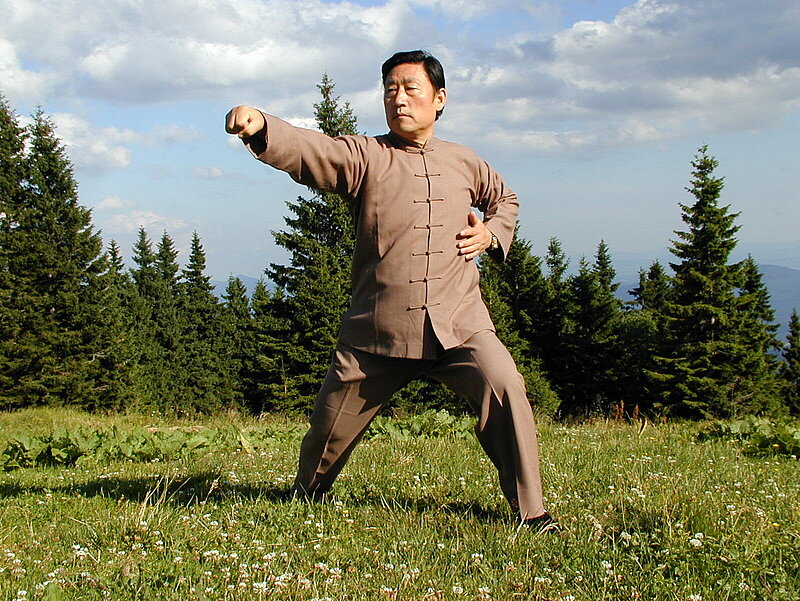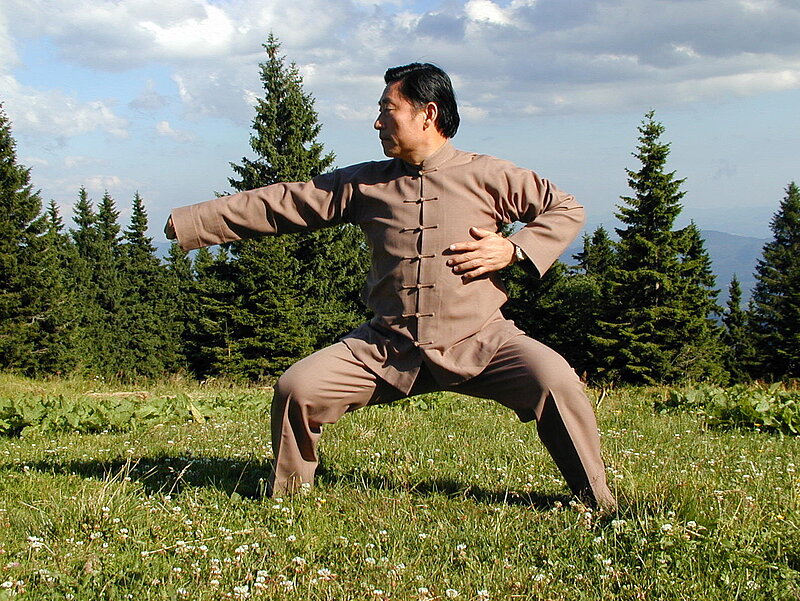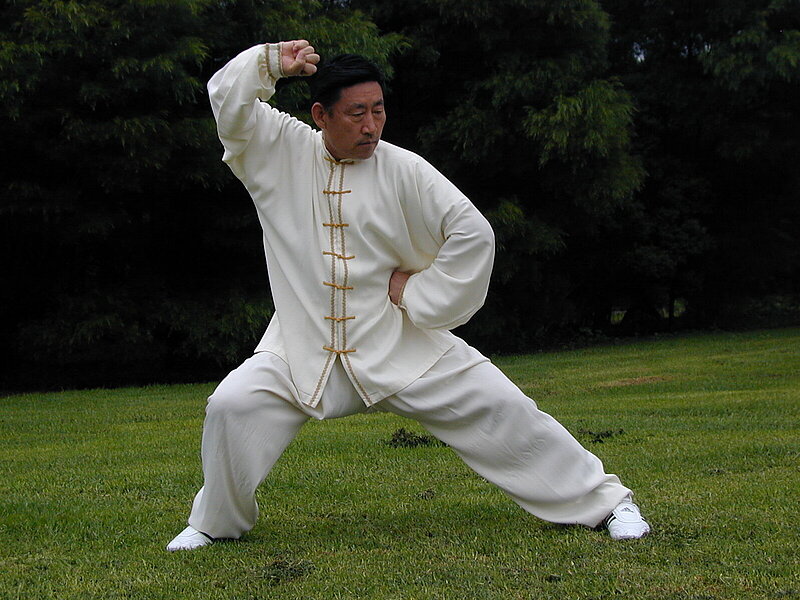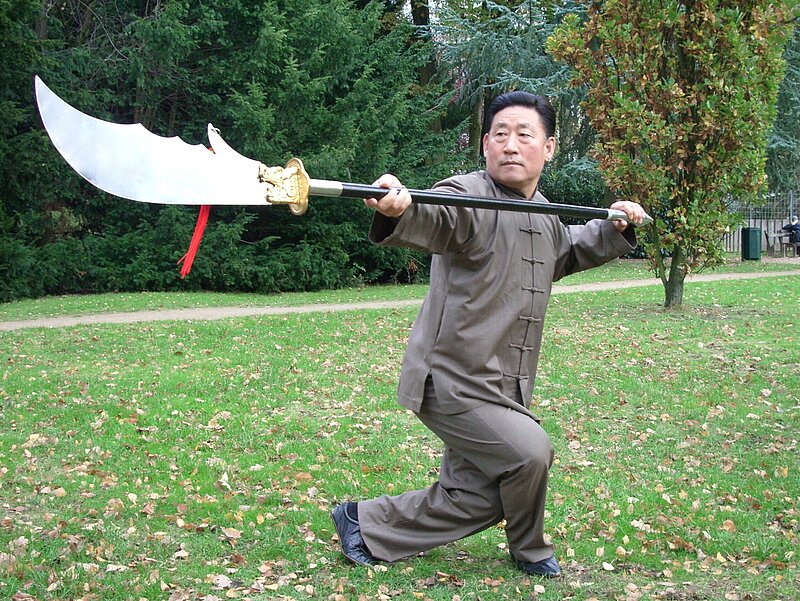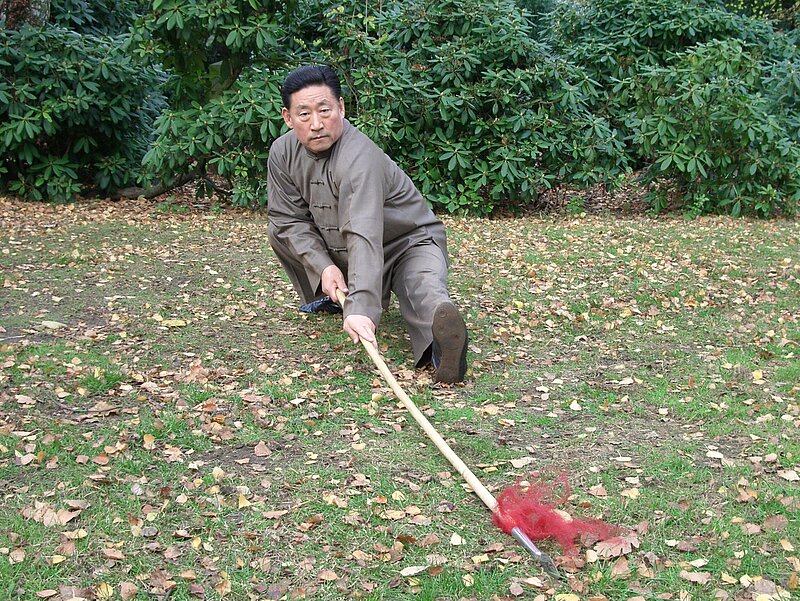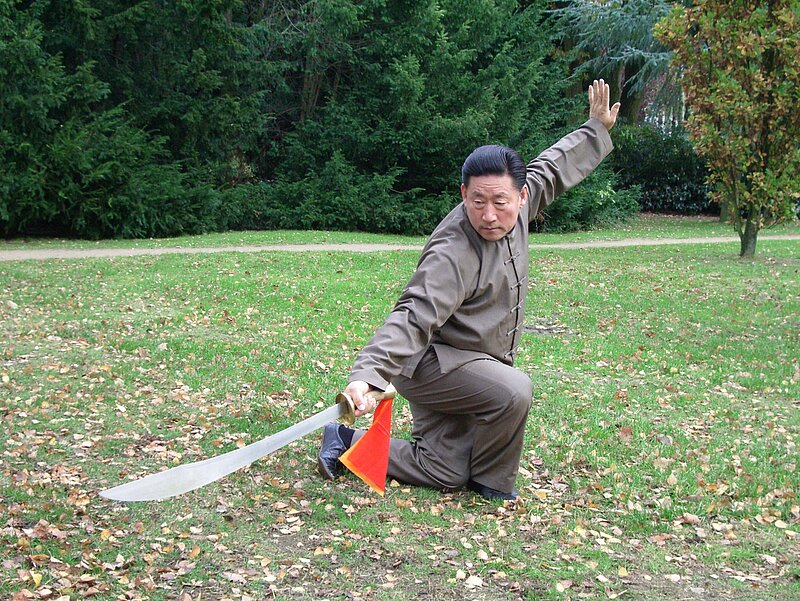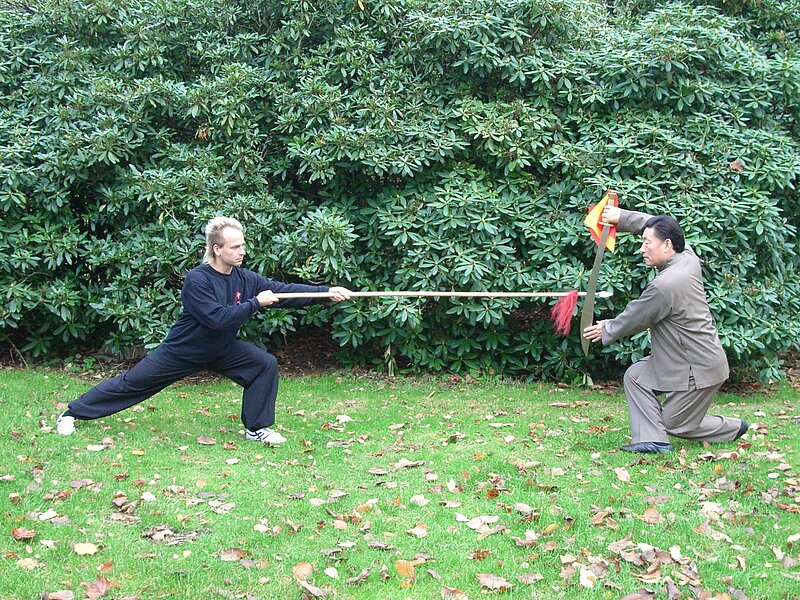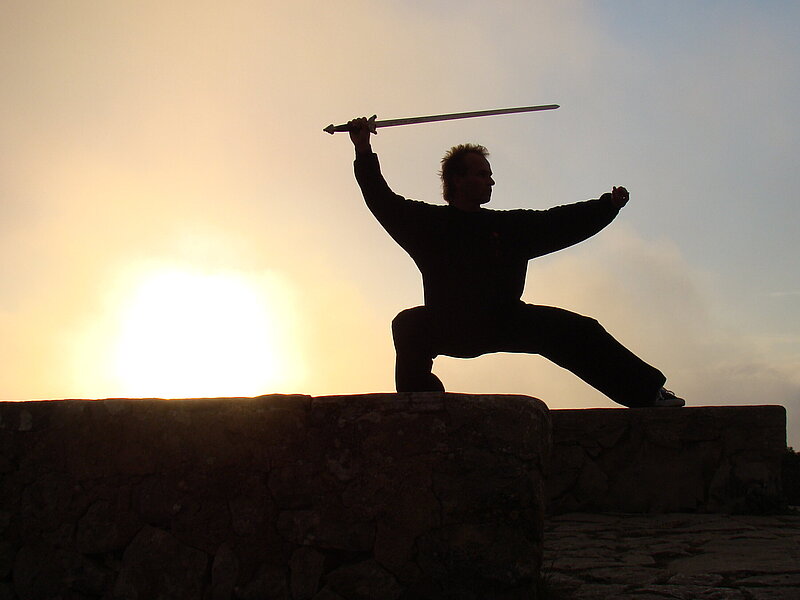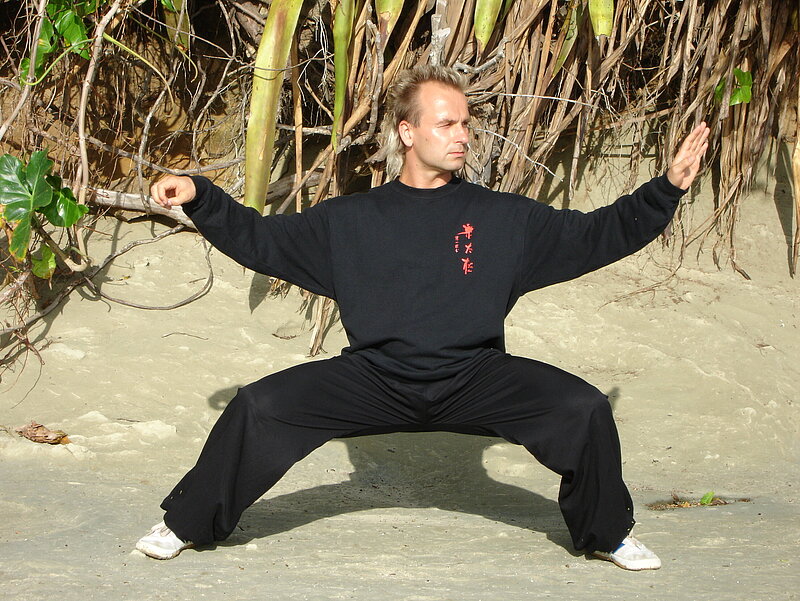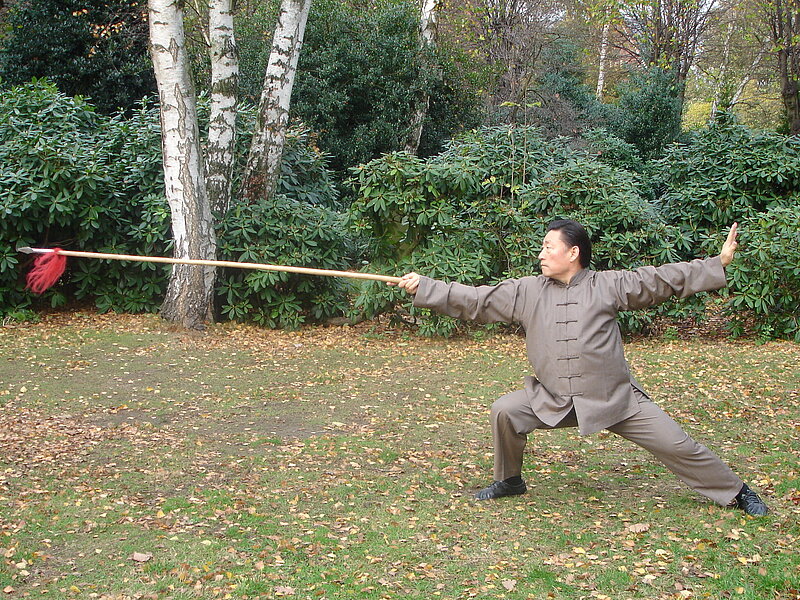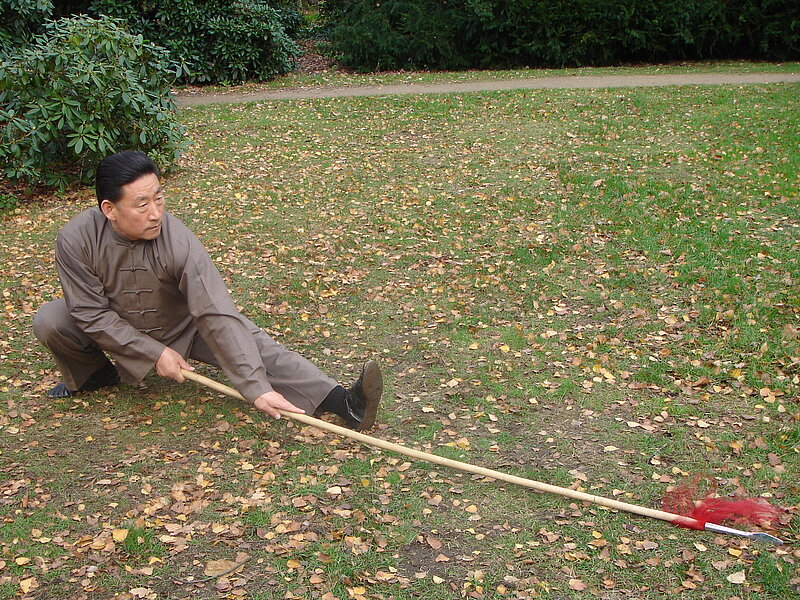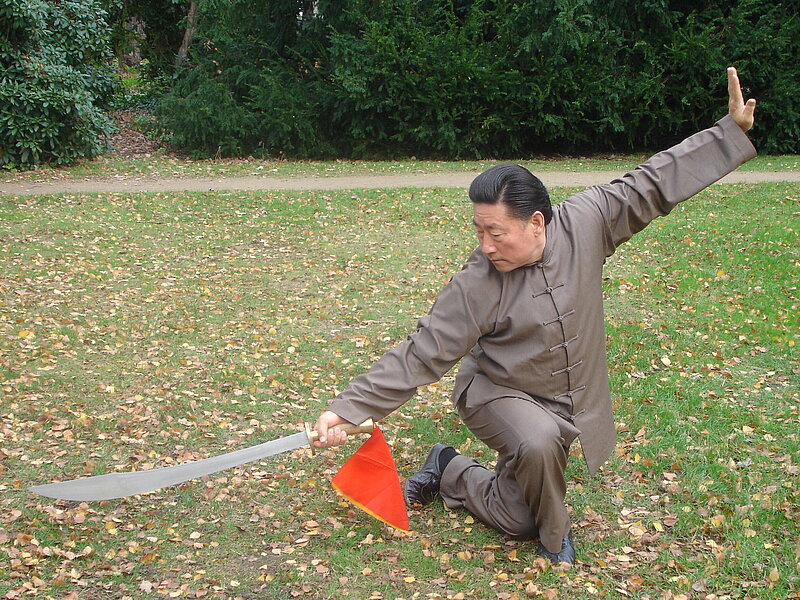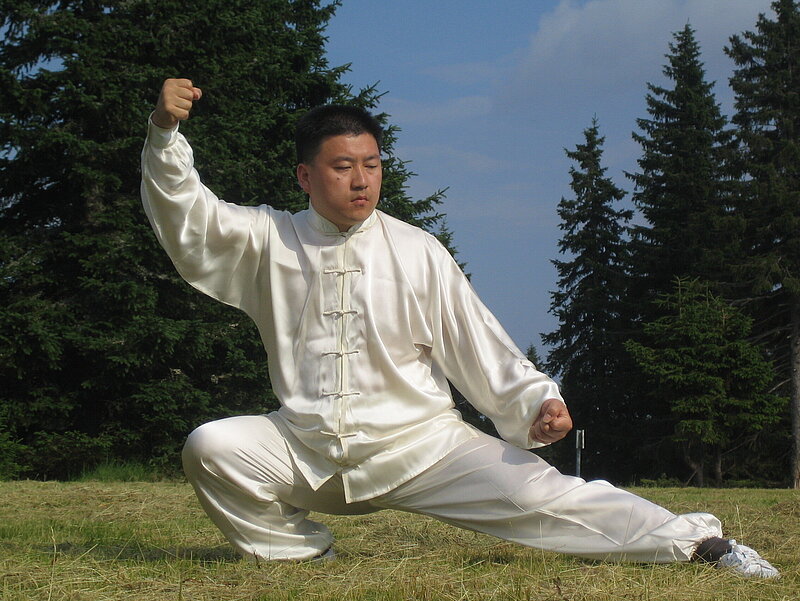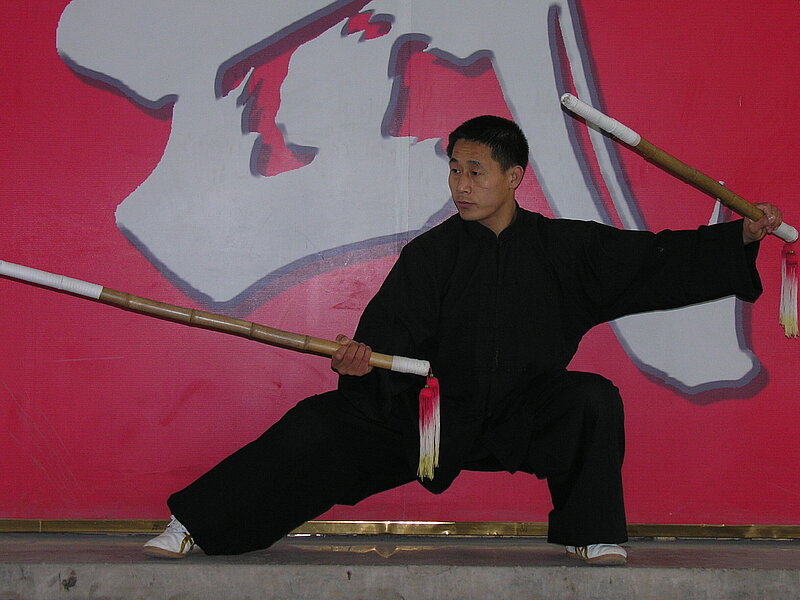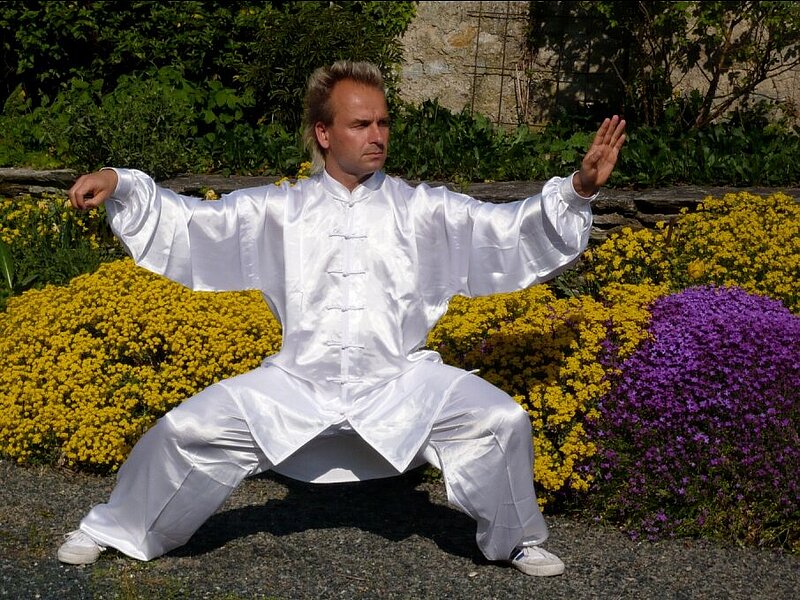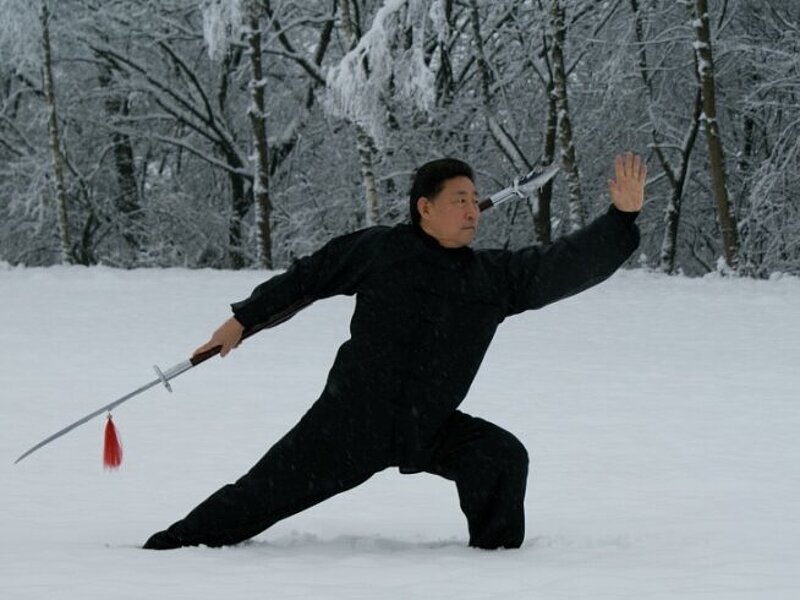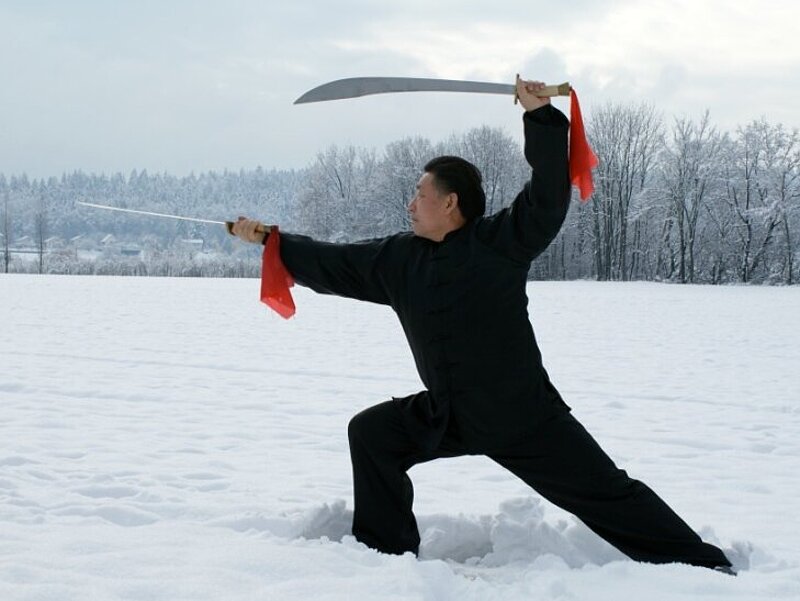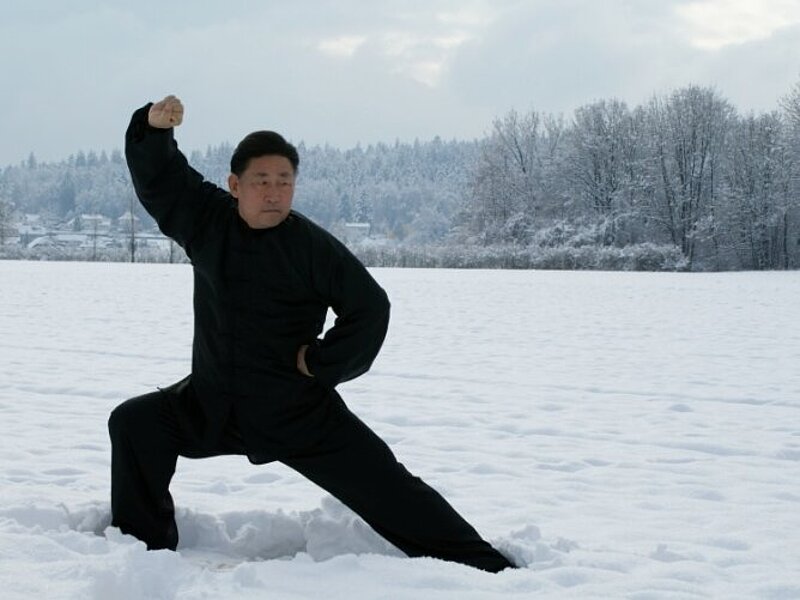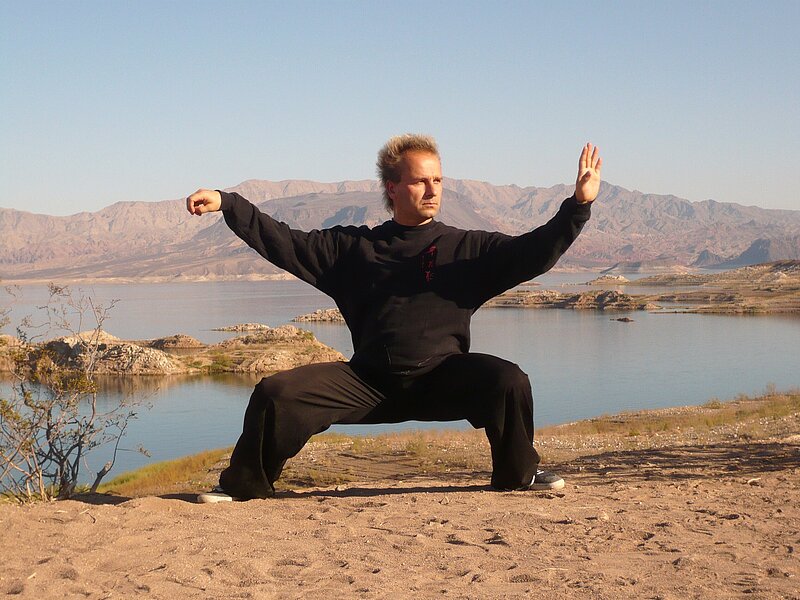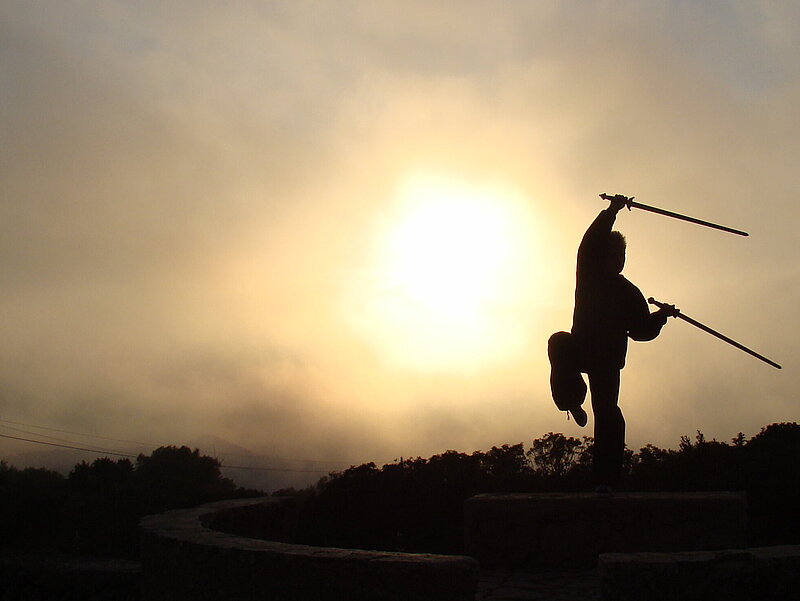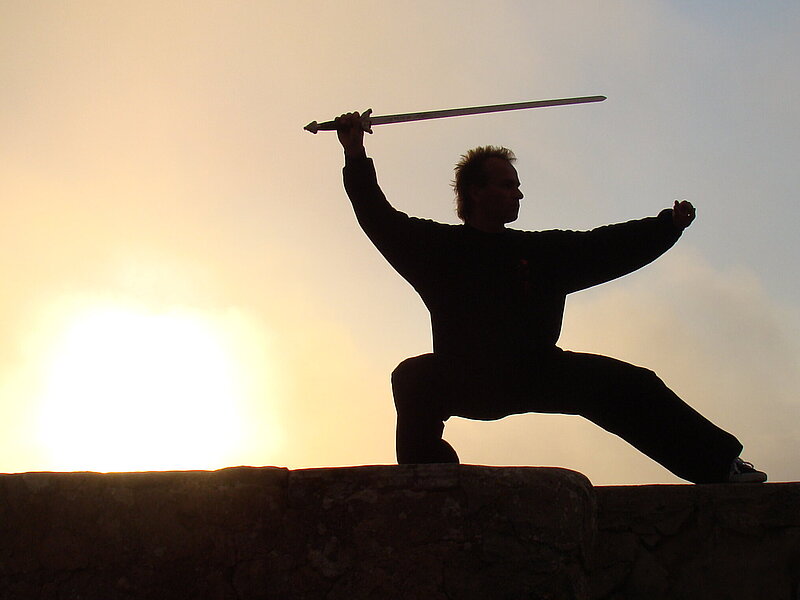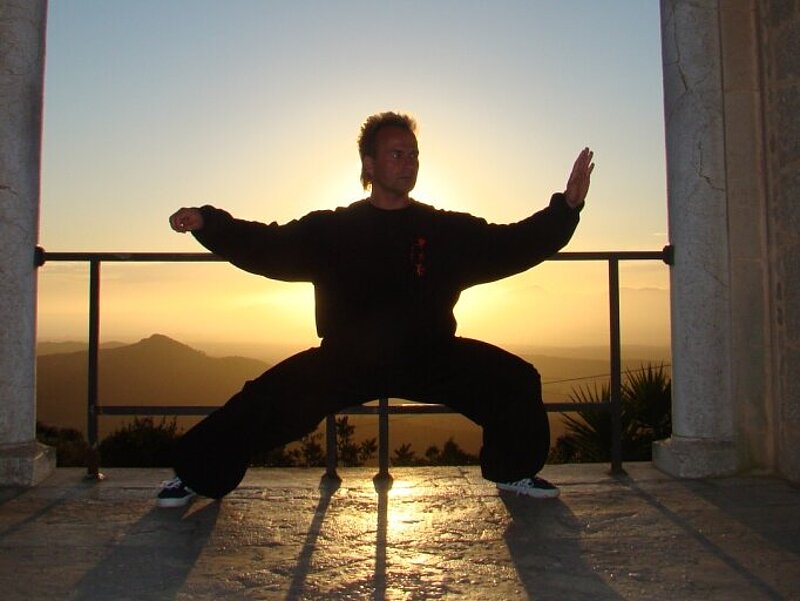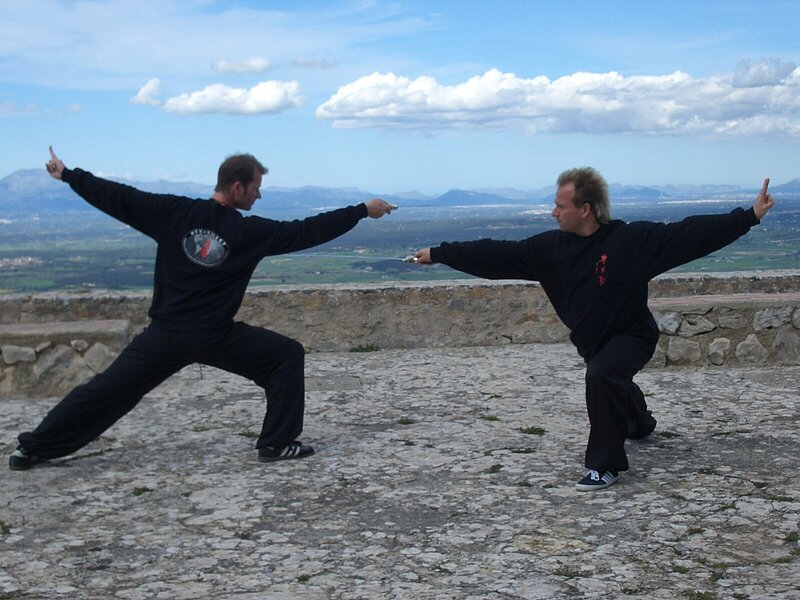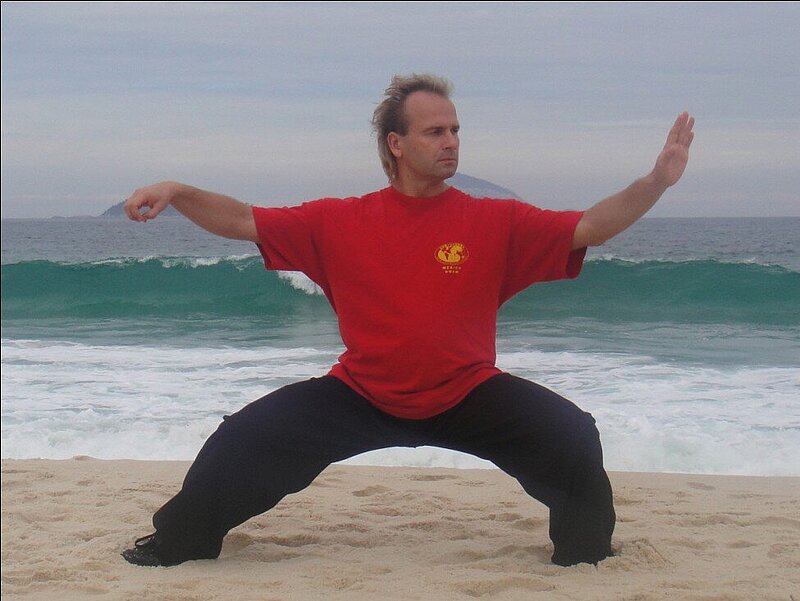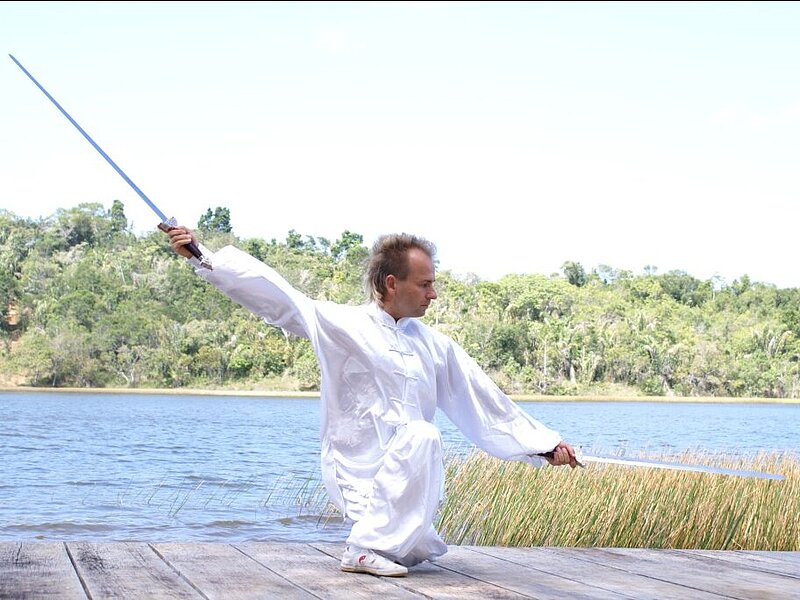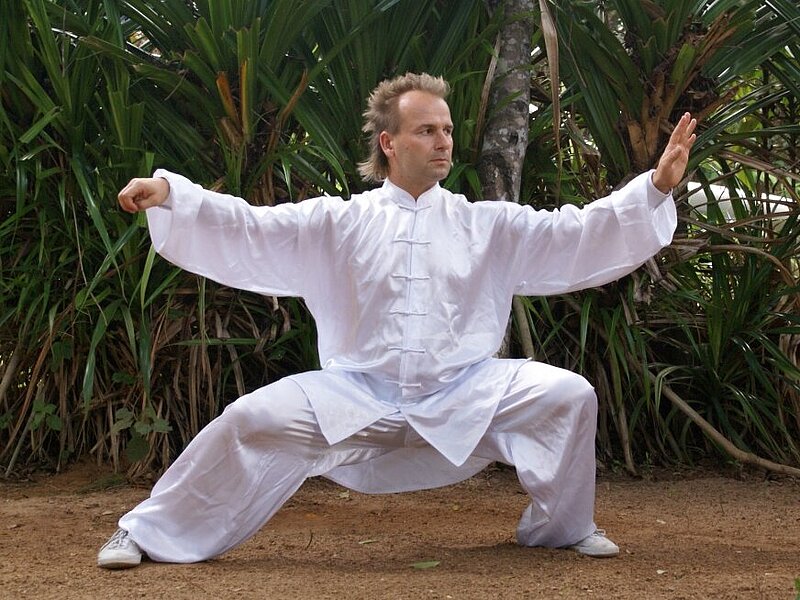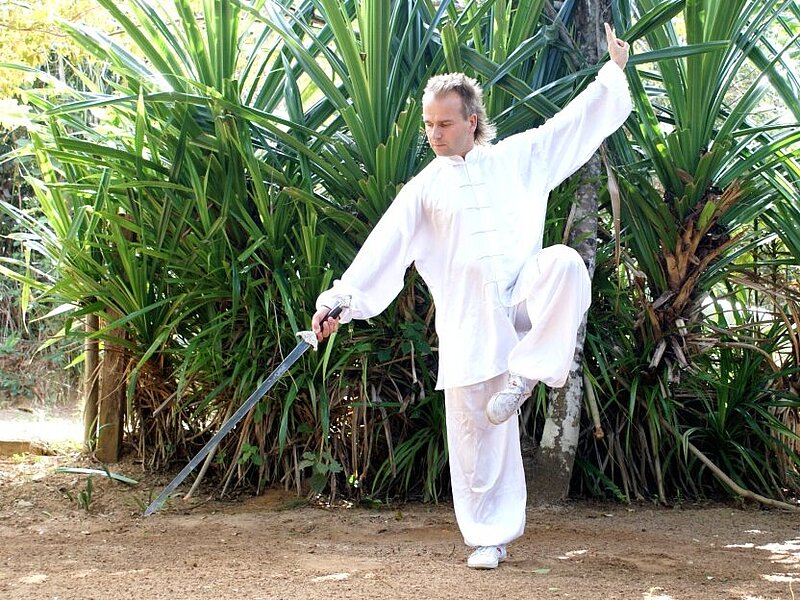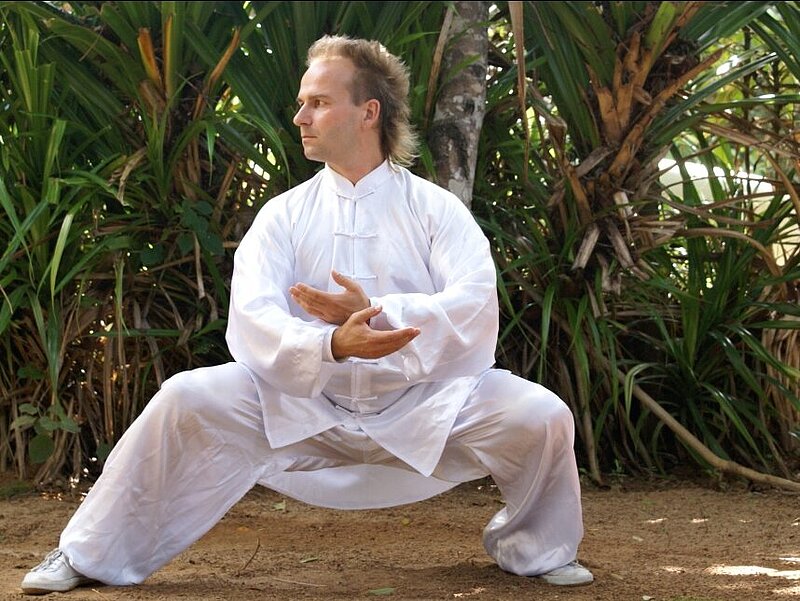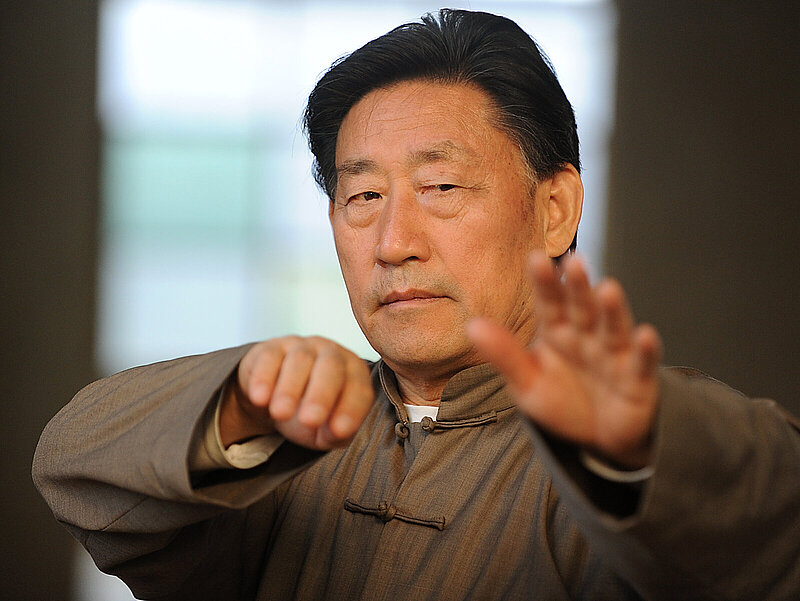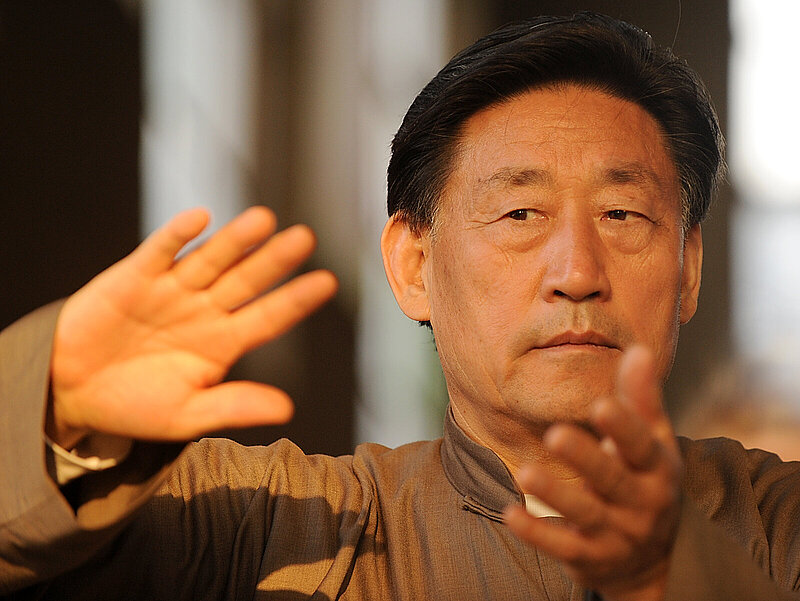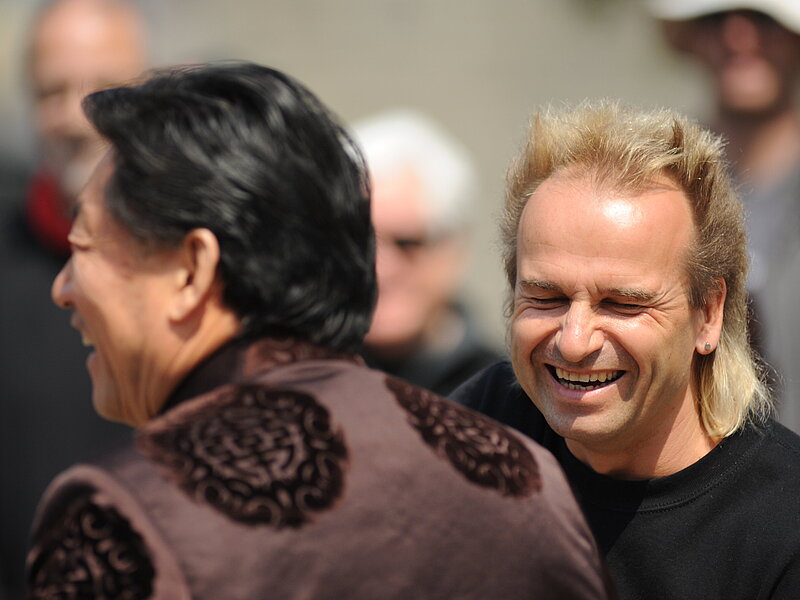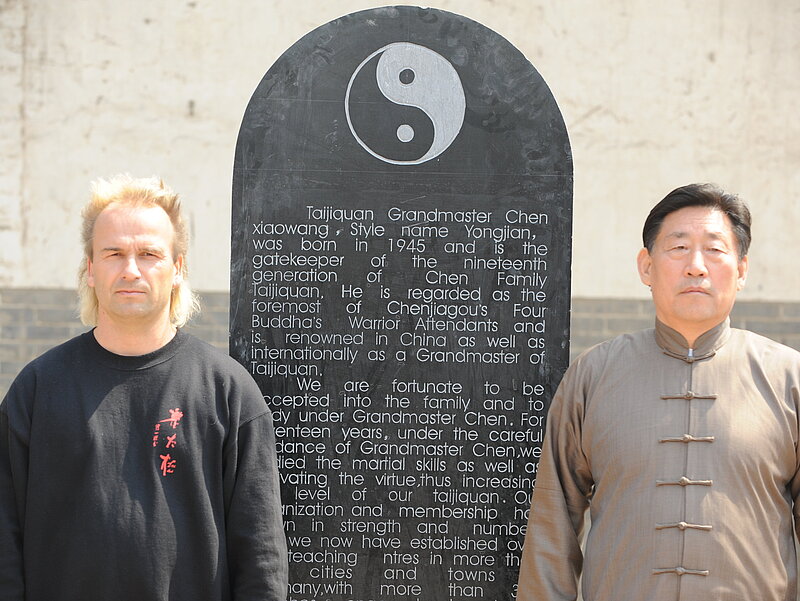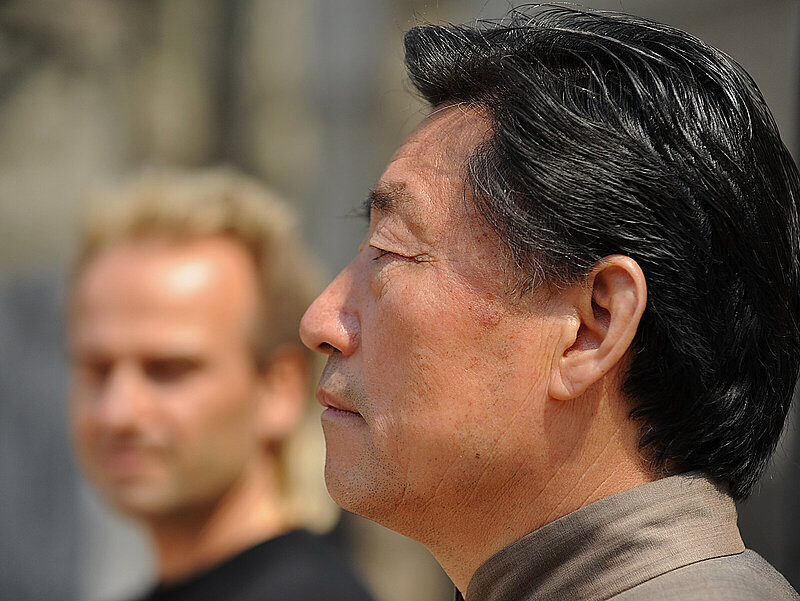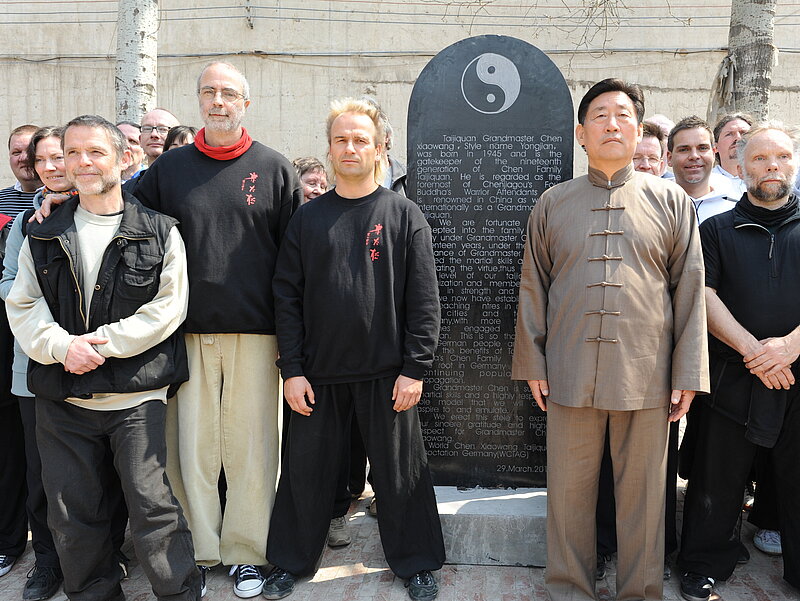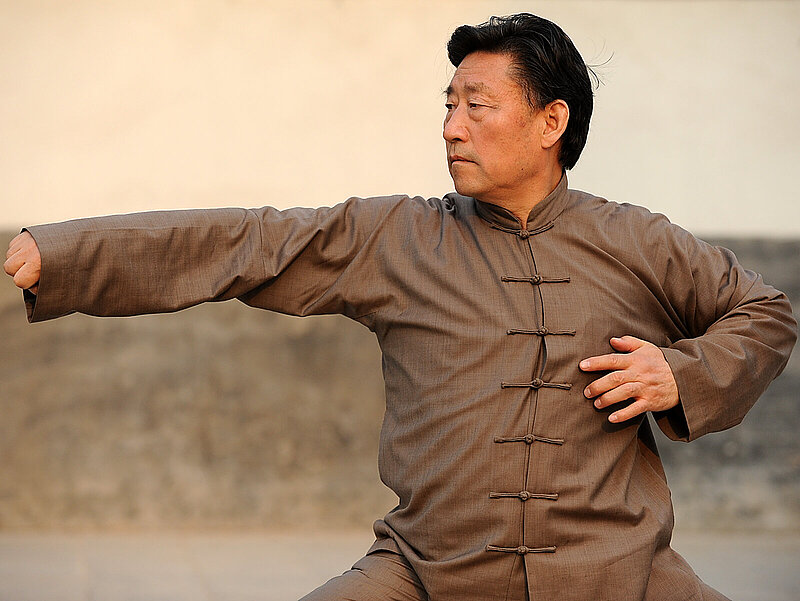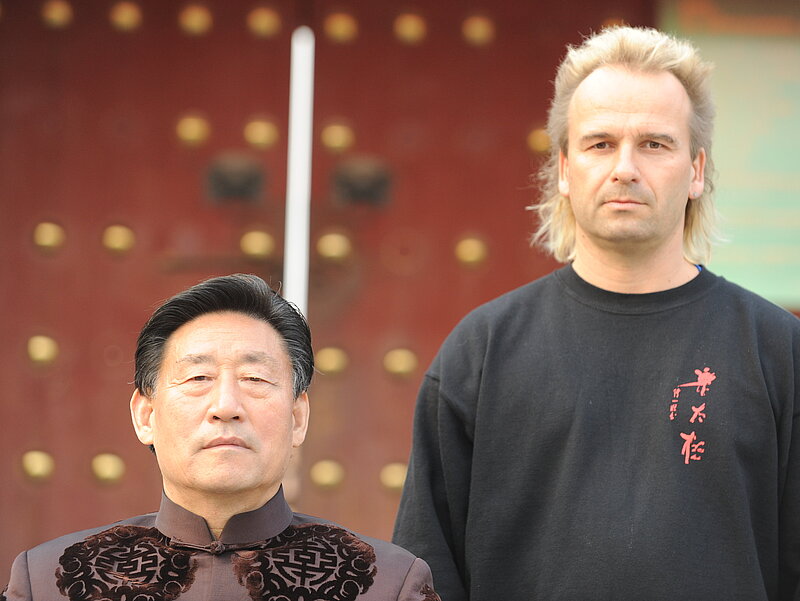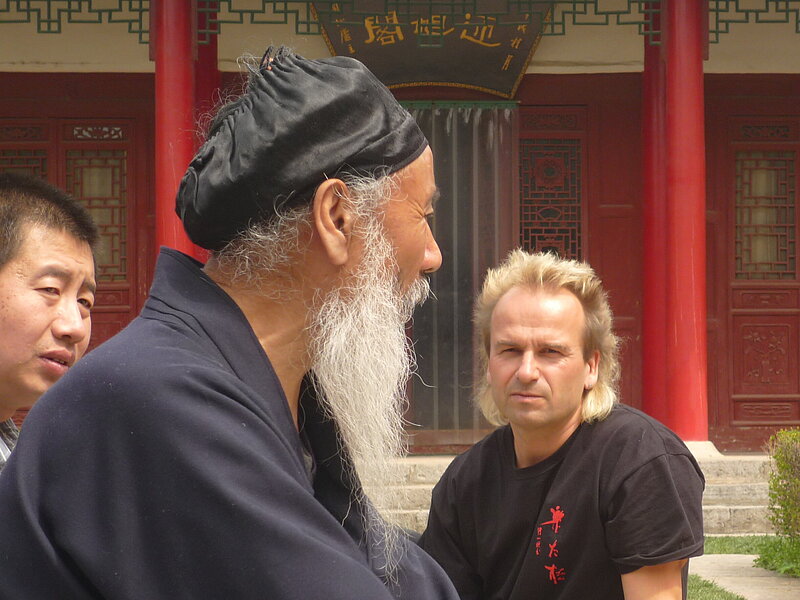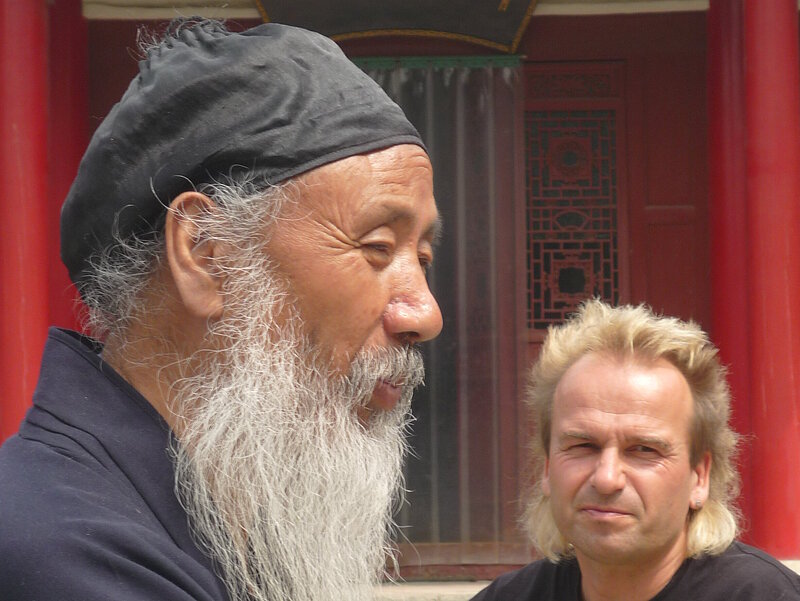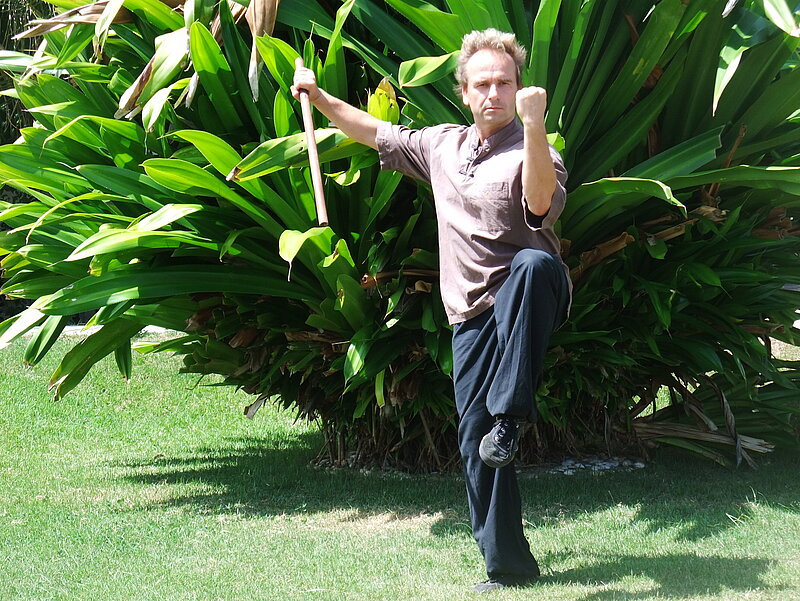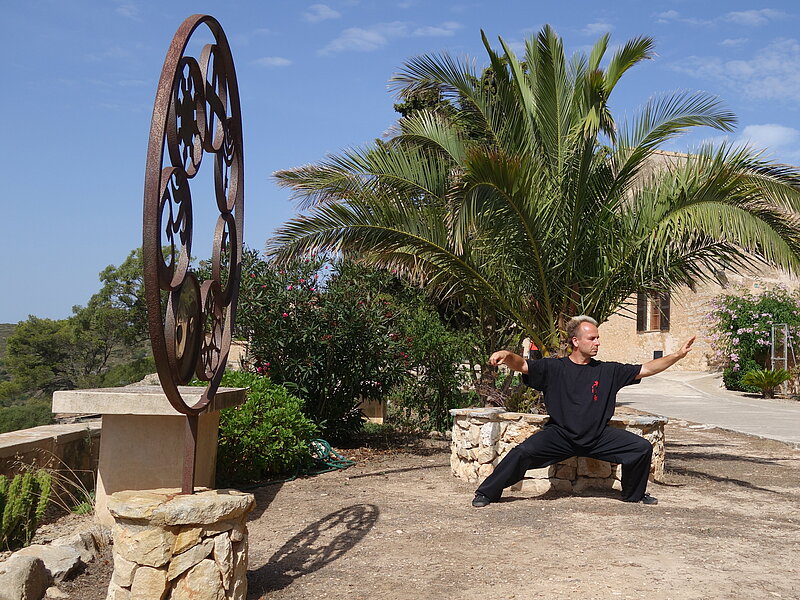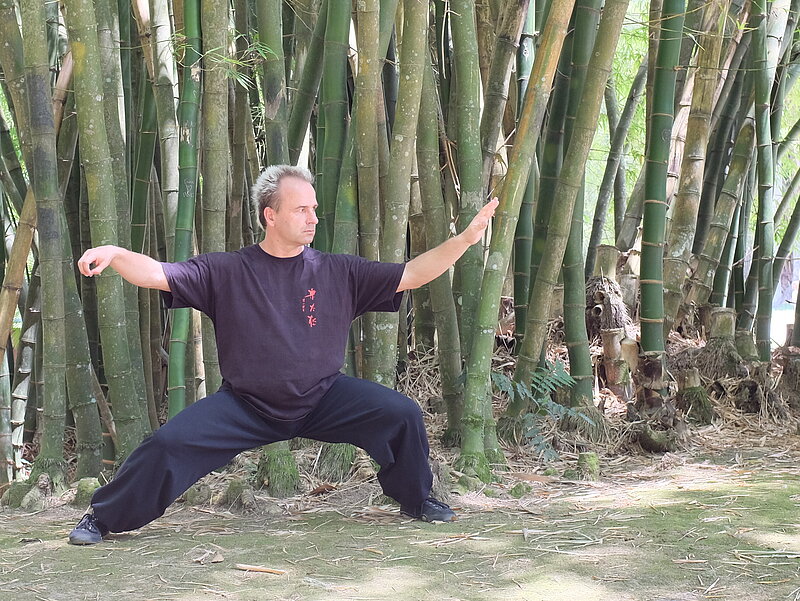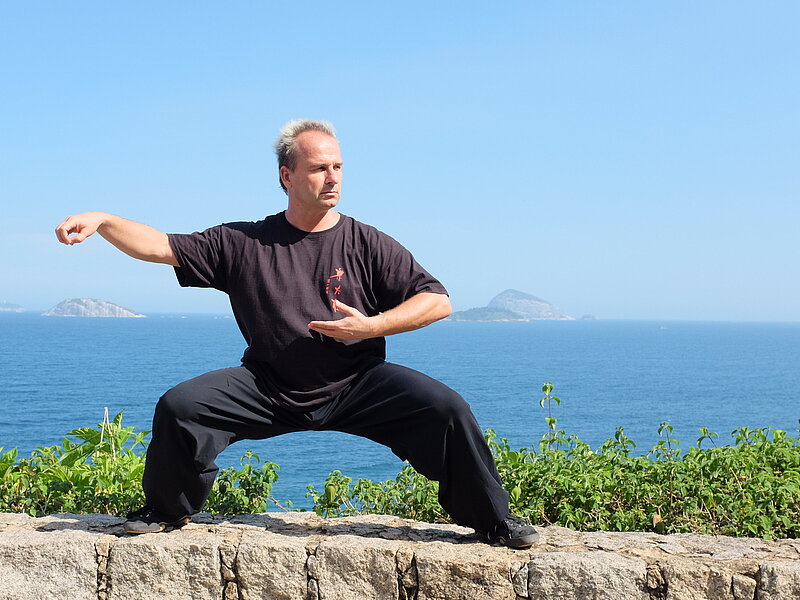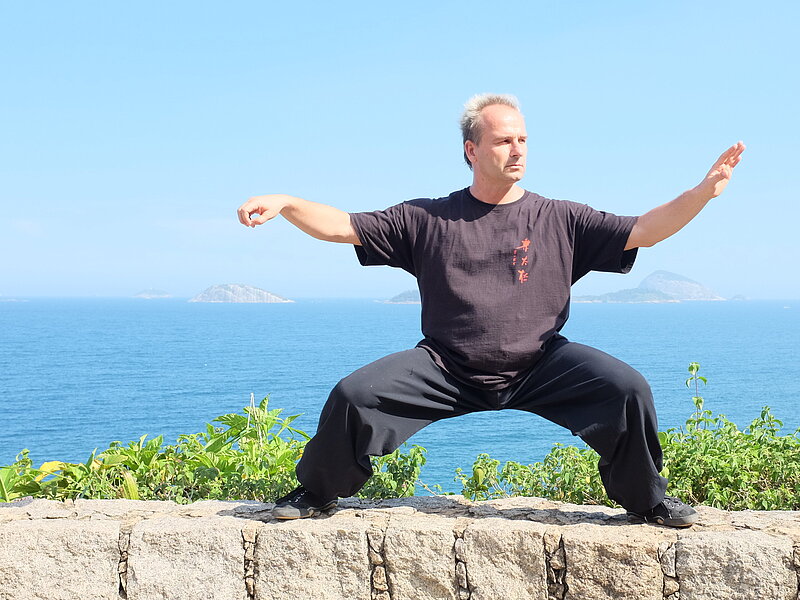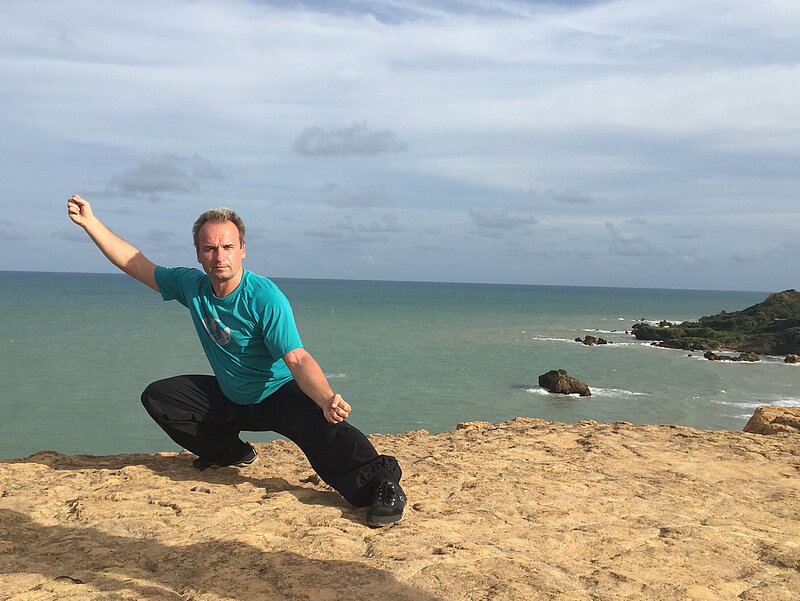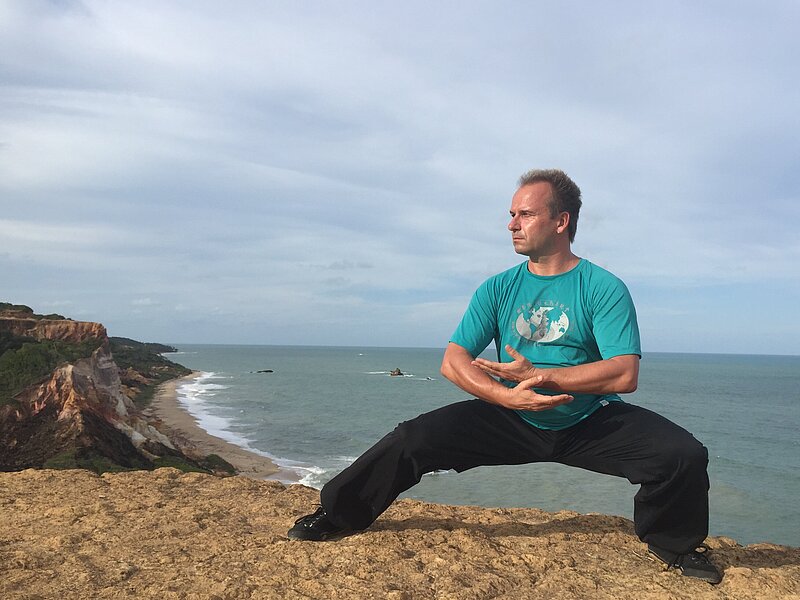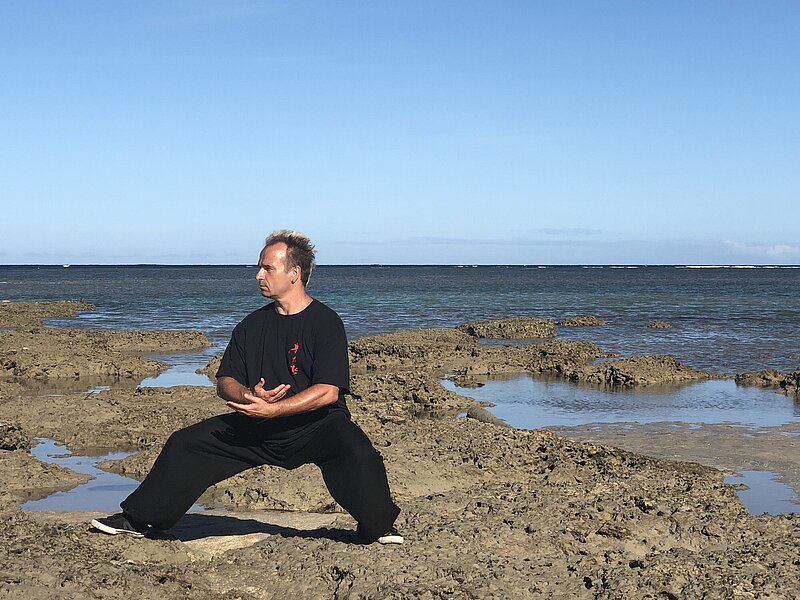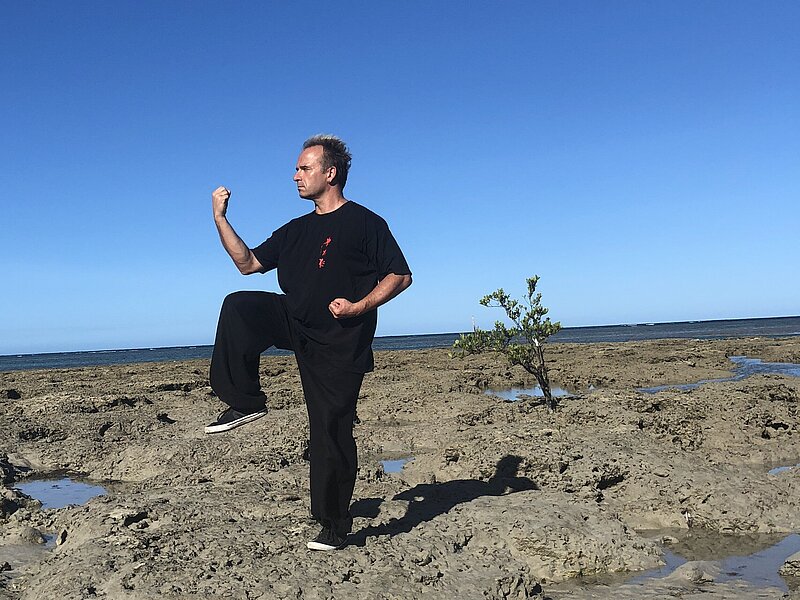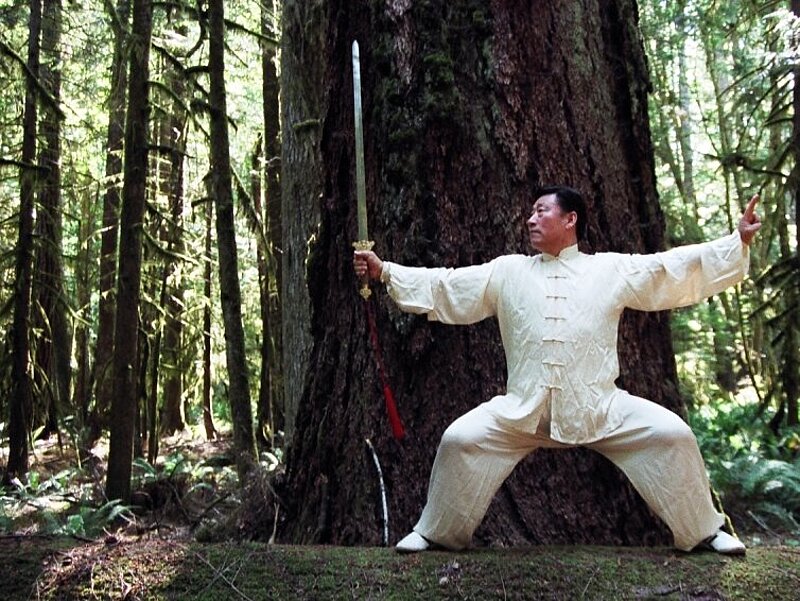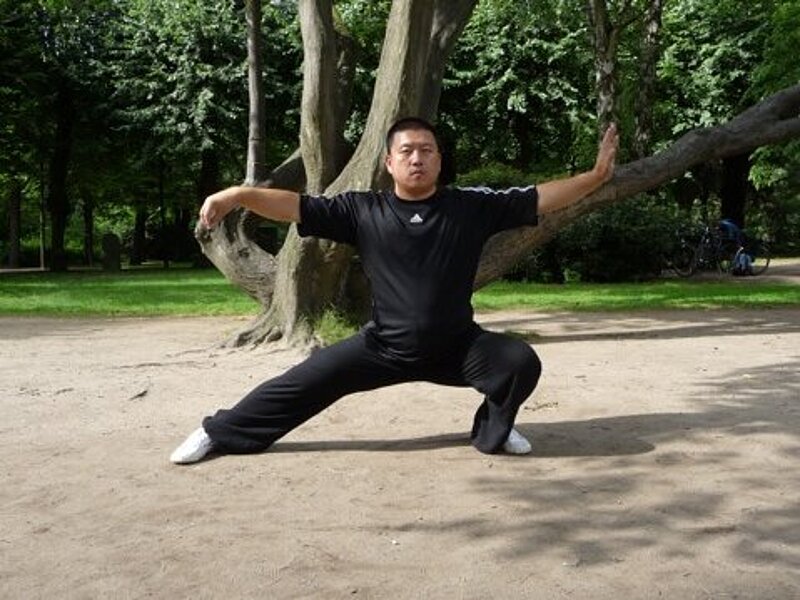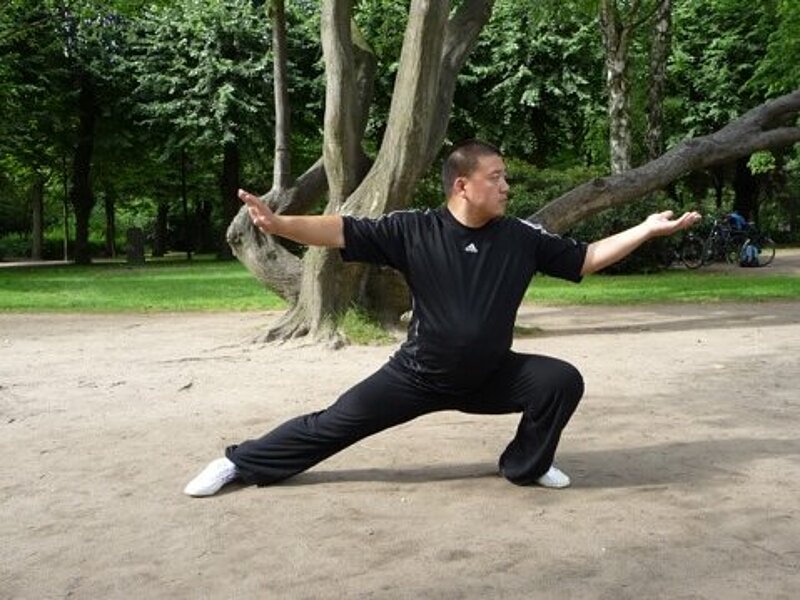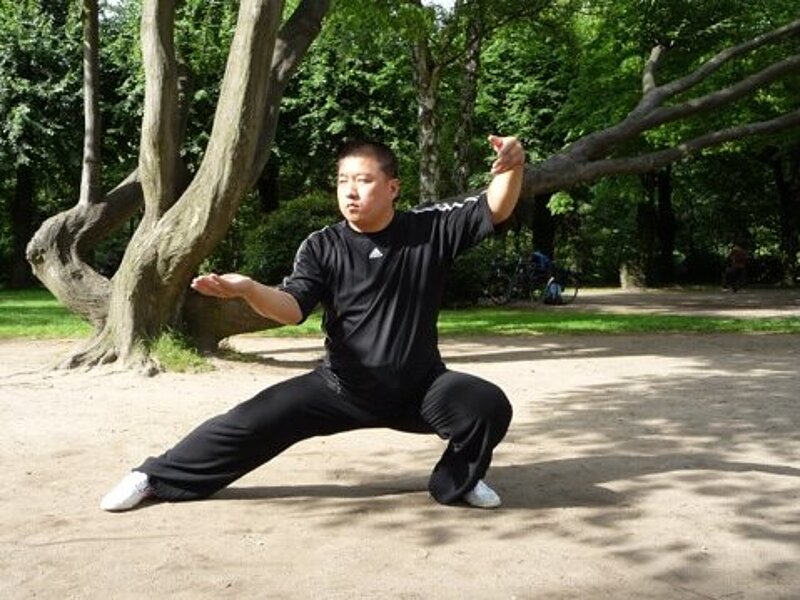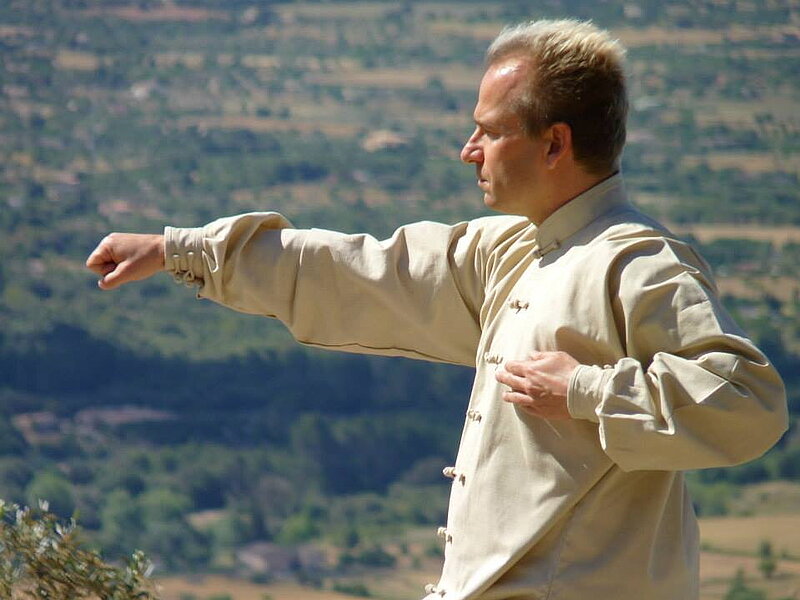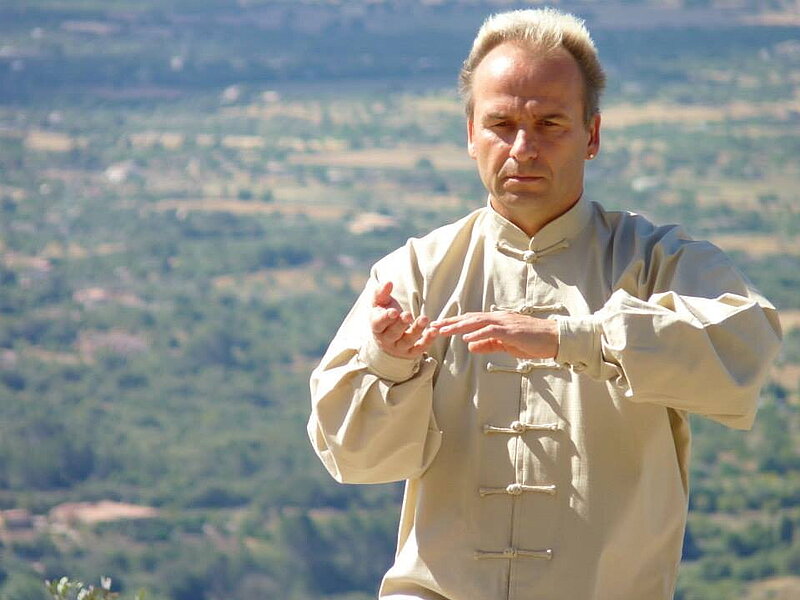Ms. Wei Huacun as Co-Founder of Taijiquan
Chen Wangting (1597-1664) is, as is generally known and recognized by all official bodies, the ancestor and original founder of Chen Taijiquan. From the Chen style all other known family styles of Taijiquan have developed later. Chen Wangting, experienced as a general very battlefield, studied after the dynasty change from the Ming to the Qing dynasty, in seclusion in his home village Chenjiagou Daoist teachings and their inner alchemy. From both, martial arts and inner alchemy, he created a new system of health-oriented martial arts. This later became world famous under the term Taijiquan.
Chen Wangting fundamentally invokes two classical works in his research and composition of the new pugilism:
- "Ji Xiao Xin Shu - Newly Composed Annals of Service" (1575), also written by a general of the Ming Dynasty, Qi Jiguang (1528-1587).
- "Huang Ting Jing (Huang ting nei wai yu jing jing - "the classic of the yellow courtyard on the inner and outer jade landscape")".
Through his vast experience and supported by these two works, he combined outer martial technique with inner energy guidance.
The work of Qi Jiguang describes the main features of Chinese martial arts of his time and highlights the most important techniques. Chen Wangting based his techniques mainly from the 14th chapter "Quan jing - main features of the training of the boxing classic" of the above work. The Huang Ting Jing basically consists of 36+3 chapters written in verse on right living, diet, sexuality and primarily inner energy work to attain immortality.
While there is a lot of confirmed information about the author of the "Ji Xiao Xin Shu", almost nothing has been disseminated about the authorship of the "Huang Ting Jing". The full title "Huang ting nei wai yu jing jing" is composed of the color yellow ("huang"), which has always had a special meaning in China. It was the color of the emperors and was assigned to the earth within the five elements, which in turn symbolizes the center. "Ting" stands for courtyard, or inner courtyard. Originally, according to Chinese construction, there was an empty courtyard in the center of a building. This symbolized the center and the highest state, emptiness. "Nei" (inside), "wai" (outside), "yu" (jade) and "jing" (landscape) denote the "inner and outer jade landscape". This refers to one's own inner body. The last term "jing" refers to a book in the sense of "classic". "Huang ting" (yellow inner courtyard) in the Daoist tradition stands for the body center (here: dantian) and emptiness as the highest spiritual goal to be achieved through energetic transformation within the three dantian ("huang ting san gong"). "The Classic of the Yellow Inner Courtyard on the Inner and Outer Jade Landscape" thus refers to a writing about the inner energy work within one's entire body in relation to its center(s).
After my own research with the help of Wang Ning, Ken Rose, Jarek Szymanski and Grandmaster Chen Xiaowang, I came to the conclusion that the only possible author of the Huang Ting Jing is Ms. Wei Huacun 魏 華 存 (251/252-334 A.D.), aka Xian An. The Huang Ting Jing originally originated first from the so-called "Huang ting nei jing jing" (The Classic of the Yellow Court on the Inner Landscape) with 36 chapters, probably at the beginning of the Jin Dynasty (265-420 AD). According to sources from the Chengdou Zhongjiao Xueyuan, a Daoist-oriented research society in Chengdou (PRC), in 288 Emperor Jing Wudi caused the Huang Ting Jing to be expanded to include a second part, the "Huang ting wai jing jing - the Classic of the Yellow Court on the Outer Landscape" with three chapters. Much later, in the Sui, Tang or even Song dynasties, a third part, the "Huang ting zhong jing jing - the classic of the yellow court on the middle landscape" is said to have been added. However, this third part is usually not as highly regarded, as it is essentially a simplified summary of the first two parts. It is therefore not usually included in the Huang Ting Jing.
Regarding the authorship of the main work of the Huang Ting Jing, only the person Wei Huacun is mentioned, who is supposed to have written and/or compiled the Huang Ting Jing in the third century after Christ, as well as to have published it. At Wei Huacun the possibility of tracing ends. One cannot be sure to how large a part the text comes from her or to how large a part she compiled previously existing texts. Before her, however, no further assignment () is possible. Thus, in the overall context, only Wei Huacun can be named as the author for the Huang Ting Jing. Similarly, Zhuangzi is considered the author of the Zhuangzi and Laozi the author of the Daodejing.
Historically, not much is known about her life. She was born in 251 or 252 CE in Rencheng of Shandong Province and was probably the daughter of a minister of education named Wei Shu at the court of Emperor Wu of the Western Jin (265-316 CE). Wei Shu himself was probably a disciple of the "Way of the Heavenly Masters (tianshi)." At the age of 24, Wei Huacun was married by her father, probably against her will, to a leading figure of the "Heavenly Masters," Liu Wen of Nanyang. He is said to have been a historian with good court contacts. They had two sons together.
Wei Huacun enjoyed a Daoist education and was trained as a ritual master (jijiu), among other things. She was also initiated in the sexual practices of Daoism. When the Eastern Jin (317-420 AD) came to power and her family emigrated to present-day Nanjing (then Jianye), Wei Huacun spent most of her life in seclusion. She is said to have passed the Huang Ting Jing on to one of her sons, who in turn is said to have passed it on to her disciple Yang Xi, through whom it was further disseminated.
Her period of activity is placed in the beginning of the Daoist school of "supreme clarity ("shangqing")". as the first patriarch (and thus founder) of which she is considered. The year of her death is dated to 334 AD.
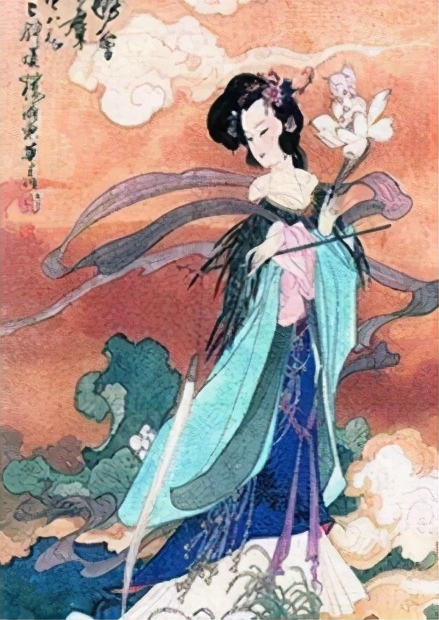
The legend about Mrs. Wei Huacun is told as follows:
Wei Huacun devoted herself very seriously to Daoist meditation, the study of the Laozi, the Zhuangzi and inner alchemy from a young age. At the age of 24, her parents arranged marriage for her, so she had to give up her practice. However, she prayed to the saints that she would find a way to continue cultivating Dao despite her family-imposed duties. After raising her two children, she announced that she would henceforth return to the path of her own and true destiny. After that, she retreated into solitude and practiced the Dao exclusively. It is said that she realized the Dao on the peak of the south ( Nanyue, probably Hengshan in the Hunan province). In this region at that time there is said to have been a lot of activity and exchange between Daoists and Buddhists.
One day during her meditation, she was suddenly enveloped by music and the sound of approaching chariots. In a bright light, four saints appeared from heaven, who, inspired by deep respect for her discipline and tireless practice, presented her with holy books and honored her with the name "the Lady of the South Mountain (nanyue furen)". One of them was the "accomplished one" Jing Lin. He is said to have presented her with the Huang Ting Jing (Huang ting nei jing jing).
The following saying is attributed to her:
"Inwardly enlightening the Perfectly Upright (zhengzhen), and outwardly being absorbed in worldly duties (shiye) shows excellent talent. This cultivates the path from the Supreme Perfection."
At the age of 83, she is said to have taken special concoctions given to her by, among others, Wang Bao ("the Completer of the Primordial Void"), who according to some sources is listed as her teacher, and disappeared from the earth. Following Wang Bao's instructions, she locked herself in Yangluo Mountain and fasted there for 500 days. Again, immortals are said to have appeared to her and given her more scriptures, after whose study and practices she is said to have ascended to the heavens and the "Palace of Supreme Clarity" (1). She is also said to have descended from the heavens to deliver the scriptures to Yang Xi (2). In some sources, she already appears second in female celestial rank after the "Queen Mother of the West," Xiwang Mu.
Whether handed down by the saints of heaven, compiled from ancient specifications, or composed by herself, Wei Huacun is the person responsible for editing the Huangtingjing and the techniques described in this work.
Thus, it is clear that General Qi Jiguang, as a man, compiled and published the most important martial arts techniques of his time, and Wei Huacun, as a woman, similarly summarized the main points of Daoist energy work and lifestyle. Therefore, it can be said that the later Taijiquan is based in its original source on a man's work on martial arts and a woman's work on inner energy work. These works were combined into one system by Chen Wangting. Taijiquan was born. Created equally by man and woman.
© Jan Silberstorff, 2006
(1) Virtual Images/Real Shadows: The Transposition of the Myths and Cults of Lady Wei, James Robson
(2) Yin Zhihua

